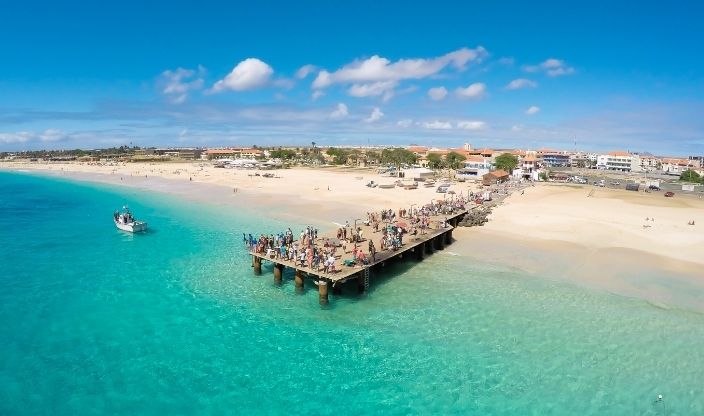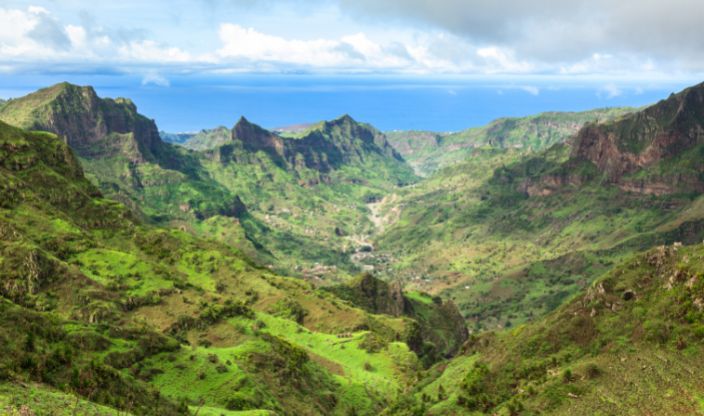Introducing Cape Verde
With its pristine beaches, constant sunshine, and incredible wildlife encounters, Cape Verde holidays provide a spectacular holiday experience without travelling to far flung destinations. This unique island archipelago is Africa’s equivalent to the Caribbean and is only easily accessible from the UK. There aren’t many destinations that serve up as much variety, from its interesting blend of civilizations to the green and volcanic scenery. The area of Sal typically emerges as the winning resort due to its amazing coastline, whereas Boa Vista is frequently preferred by families because of its selection of Blue Flag beaches.
You won’t run out of things to do on your Cape Verde holidays, whether you want to unwind by the beach, take in the lively music scene, or try out the thrilling water sports.
The temperate and volcanic islands of Cape Verde are located in the Atlantic Ocean and enjoy pleasant weather throughout the year. Off the coast of Senegal, the former Portuguese colony is located roughly 460 kilometres away (Africa). The archipelago is a part of Macaronesia, along with the Canary Islands, Azores, and Madeira. There are 12 islands in the Cape Verde archipelago, although only 9 are inhabited. The upper wind islands are found in the north, and the lower wind islands are found in the south. Because the islands are so different from one another, they are each truly spectacular. Each island has unique characteristics that make it ideal for pursuits like surfing, climbing, or relaxing on stunning beaches.
The greatest time to travel to Cape Verde is between November and June, when you can take advantage of the islands’ famed white sandy beaches. There is very little rain, and the temperatures range from the mid- to upper twenties. Additionally, because of Cape Verde’s breeze, comparable to the Canaries, the heat won’t feel oppressive. Discover the local markets, trek into the mountains, and enjoy the crystal-clear waters and Caribbean-like beaches by travelling to Cape Verde in November or December.
The cuisine of Cape Verde has been influenced over the years by its Portuguese origin, as well as Creole and African flavours. As the islands are surrounded by sea, its seafood is particularly significant to its main dishes. The national dish of the archipelago is cachupa. This rich, slow-cooked stew, which is a variety of feijoada, is made with beans, corn, vegetables, and either fish or meat. It frequently comes with rice. Additionally, soups like Canjo, a nourishing chicken soup with rice, onions, and carrots, is popular with locals and travellers.
For its geographical position, Cape Verde’s history is both conventional and distinctive. During the Spanish-Portuguese Inquisition, the islands served as a location for the transatlantic slave trade, an asylum for political prisoners of Portugal, and a haven for Jews and other victims of religious oppression for three centuries. The Portuguese, who discovered Cape Verde, characterised the islands as “totally deserted” upon their arrival in 1456. Since Islamic merchants controlled the Trans-Saharan trade of gold and slaves to the north and salt to the south, the Portuguese sought to establish new trade routes, merchandise, and geographic expertise. Slavery was ultimately outlawed on Cape Verde in 1878 following a slave uprising in 1853 that was violently put down. Since then, the area has been farmed using the sharecropping system, which is still common in Cape Verdean agriculture.
On July 5, 1975, the Republic of Cabo Verde proclaimed its independence.
Children love visiting the Cape Verde islands. Expansive sandy beaches, swimming activities in hotel pools, and kid’s activities all feature in a typical Cape Verdean family vacation. Magnificent beaches and experiences like horseback riding, turtle spotting, and volcano exploring are guaranteed to provide enthralling and unforgettable stories for family and friends back home.
Recommended Cape Verde Specialists
Top Locations in Cape Verde





